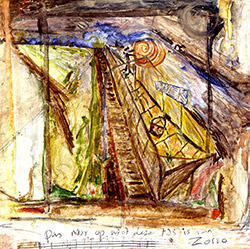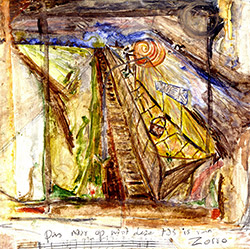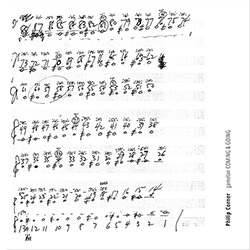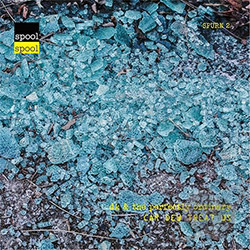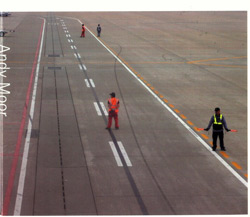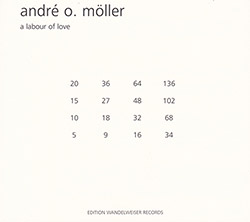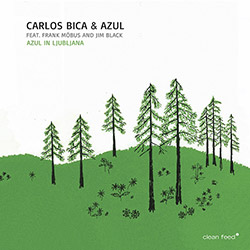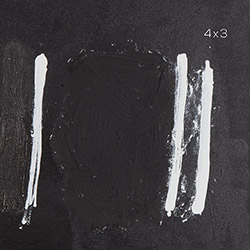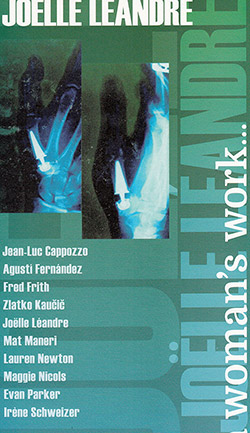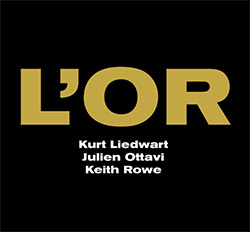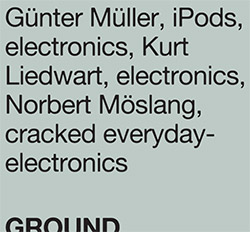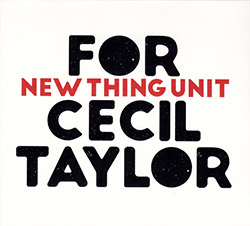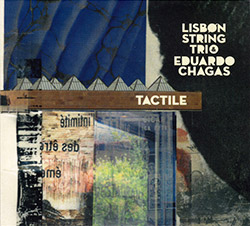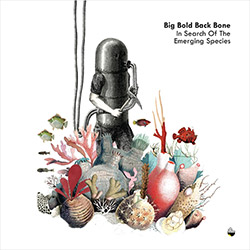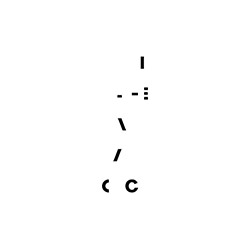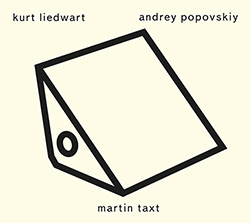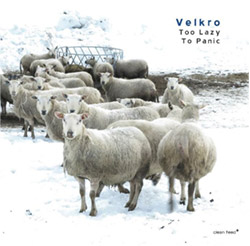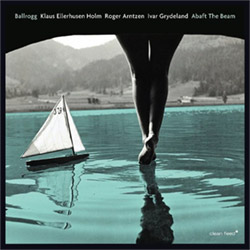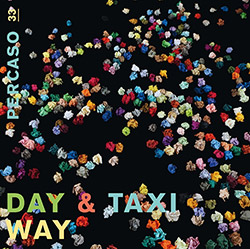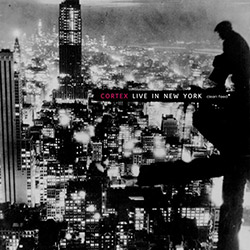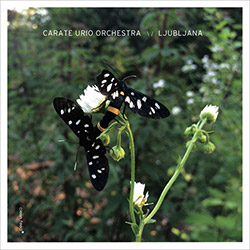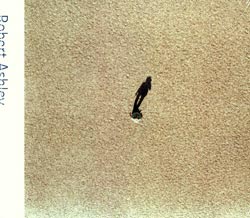
A selection of works by the great musical pioneer Robert Ashley performed by the Dutch Ensemble MAE directed by Yannis Kyriakides, including pieces written for the Ensemble MAE.
Out of Stock
Quantity in Basket: None
Log In to use our Wish List
Shipping Weight: 3.00 units
Sample The Album:
Ensemble MAE:
Karolina Bäter-recorders
Noa Frenkel-voice
Wiek Hijmans-electric guitar
Koen Kaptijm-trombone
Barbara Luneburg-violin
Michel Marang-clarinet
Jelte van Andel-doublebass
Hans van der Meer-percussion
Reinier van Houdt-piano
Nathan Fuhr-voice
Yannis Kyriakides-musical director
Click an artist name above to see in-stock items for that artist.
UPC: 634479643217
Label: Unsounds
Catalog ID: 15u
Squidco Product Code: 9639
Format: CD
Condition: New
Released: 2007
Country: The Netherlands
Packaging: Digipack
Recorded and mixed by Sem de Jongh, January 23-24 2007, MCO Studios, Hilversum, The Netherlands by Yannis Kyriakides.
"A selection of pieces by the great musical pioneer Robert Ashley performed by the Dutch Ensemble MAE. Some of the works were especially written for the Ensemble in the last few years, and have never been recorded before, namely the title work "Tap Dancing in the Sand" featuring Ashley's voice and "Hidden Similarites" . Other works presented on the CD are "Outcome Inevitable", "in memoriam Esteban Gomez" and "She was a Visitor".
Programme Notes by Robert Ashley
1.Tap Dancing in the Sand (2004)
_"Tap Dancing in the Sand" was written as a text in 1979 when Woody Vasulka asked me to play Hector Berlioz in a video opera he was working on. It was based on an anecdote about a commission from Niccolo Paganini to Berlioz to compose a work. (For some reason Paganini never played the piece, but it is said that on his death bed he lamented that not playing the piece was the worst mistake he ever made.)
I was to play Berlioz. But the video opera had no narrative as such. Vasulka told me just to write five or six scenes where Berlioz would make profound and oracular statements. I simply took quotations of various ancient authors from "The Art of Memory" by Francis Yates, the great scholar of Neoplatonism and strung them together with notes I had made on occasions when I was away from home.
I didn't do any research on the character of Berlioz. That seemed wrong. But a few years earlier I had worked with the composer Alvin Lucier on a series of four motion pictures by George Manupelli, where Lucier played the part of a very funny character named "Dr. Chicago." In writing the movies with Manupelli and Lucier I discovered that, curiously, Alvin thought of himself as a kind of "reincarnation" of Berlioz. So I decided to portray Berlioz as Alvin Lucier playing the part of "Dr. Chicago." That became a starting point and had the added charm of trying to imitate a real person, whom few people would know about, playing an entirely fictional character. This is the challenge of writing music under a pseudonym, music with a secret, that has fascinated so many composers. This possibility of creating for Woody Vasulka the character of Berlioz "at two steps removed" was an inspiration for making a text full of "profound and oracular" statements in a setting of meditation and mystery.
I have always liked the text (which was barely heard in the video piece because of vocal processing) and have wanted to do something with it musically for 25 years. It occurred to me finally, when I was invited to compose a work for the MAE, that this was the opportunity.
I had been working for the past few years on various new kinds of vocal "doubling" or "shadowing." (This practice is a staple in popular music.) But I had never had the opportunity to try the doubling with instruments. The notion of doubling, of course, is to enhance the vocal part and to make certain lines memorable in a way that is possible only in music.
In the treatment of the orchestra for the MAE the instruments imitate, in Part I, the stresses and rhythms of spoken English in a seven-note pitch vocabulary (which is approximately the pitch range of spoken English), but do not imitate the pitches of the speech. In Part II the players embellish the written pitches as much as they can to the purpose of reminding the listener of the oracular style of the speech, but "translating" that style into pure instrumental music.
2.Outcome Inevitable
The composition was commissioned by The RÈlache Ensemble (Philadelphia) in 1991. It is simply a series of solo statements for various instruments with a percussion and contrabass accompaniment and with each solo instrument ìshadowedî by the viola playing softly on the same pitches. The original score was for the instruments in the RÈlache Ensemble, but with transposition the piece can be played by almost any group of orchestral instruments. The ordering of instruments in the MAE arrangement (done by MAE) seems excellent to me.
The notes and rhythms of the solo statements were taken from an embarrassingly large table of assignments and proportions I worked on in 1962 under the title of 'Fives' --- all of the assignments and proportions deriving from 'all possible' combinations of the numbers one-through-five. I have rarely used this table (because it is complicated and hard to use), but when I do I am always somewhat pleased with the results. The proportions of one-through-five seem musical to me. I am honored and pleased that MAE has produced a new and very musical version of the composition.
3.Hidden Similarities
"Hidden Similarities" is a first-draft version of one of four songs from the opera, "Concrete." In the opera the song is called "Ideas About Thinking" and its duration is about 18 minutes. The first-draft version has all of the incidents of a story given in a certain style of telling the story. It does not have the elaborate characterizations and incident embellishments that are found in the opera. Thus, when MAE asked me for a composition of a certain length (brief, five minutes), I was pleased that the shorter version (first-draft) satisfied that requirement and that I could use the story, a story that I like a lot.
I wanted MAE to tell the story in Dutch (and to think of the story in Dutch), because I hear Dutch as a beautiful language, one that is unique in many sounds.
This is a special arrangement of the voices of MAE used to tell the story and a special arrangement of the orchestra resources of the Maarten Altena Ensemble on the occasion of MAE's 25 Anniversary Concert celebration. It is dedicated to MAE in hopes that it may be useful in future concerts.
The technique of the composition reflects my attempts to find a new way of telling a story in the simplest and most direct way. It reflects, too, my belief that the voice should be a part of every musician's technical skills, and it shows my belief that the use of the voice is in every way as important as technical skills on an instrument.
4.in memoriam ESTEBAN GOMEZ (quartet)
in memoriam ESTEBAN GOMEZ (quartet) is one (the first) of a group of four pieces that I thought of as prototype versions of the ensembles named in their titles. The other three are: in memoriam JOHN SMITH (concerto), in memoriam CRAZY HORSE (symphony) and in memoriam KIT CARSON (opera). When the group of pieces was written in 1962, I was reading a lot of American and European history and it occurred to me, right or wrong, that the evolution of certain ideas which could be expressed in music in Europe through the four forms named --- the quartet, the trio concerto, the symphony and the opera --- corresponded in a peculiar chronological way with the social or political forms that were developing in North America at more or less the same time.In other words, an idea that could be expressed in Europe in an art form had to take a social or political form in America, because there was no art in America. The four names represent the chronology of those ideas. Esteban Gomez was one of the three Spanish Captains chosen by Magellan, under Portuguese patronage, to accompany him on his trip around the world. When Magellan put in at some port in eastern South America to restock and think things out, he sent Gomez and the other two captains ahead to scout out the route around the bottom of South America.Apparently Gomez took a good look at what is now the Strait of Magellan and decided to head home, taking the other two ships with him. Somehow this symbolized for me the kind of decision-making that must have characterized the earliest quartets. Gomez is also credited with making the first map of the eastern seacoast of America.
5.She Was a Visitor
She Was a Visitor is another form of description, it is intended to be understood as a form of rumor. The chorus is divided into groups, each headed by a leader. A lone speaker repeats the title sentence throughout the entire performance. The separate phonemes of this sentence are picked up freely by the group leaders and are relayed to the group members, who sustain them softly and for the duration of one natural breath. The time lag between the group leaders' phoneme choices and those phonemes being picked up by members of the group produces a staggered, chant-like effect, with the sounds moving outward from the nearest performer to the farthest.
Artist Biographies
• Show Bio for Reinier van Houdt "Reinier van Houdt is a composer and pianist from Rotterdam, Netherlands, member of both the Ensemble MAE and the Ives Ensemble. Reinier van Houdt studied piano at the Liszt-Akademie in Budapest & the Royal Conservatory in The Hague. He premiered music by ao Robert Ashley, Alvin Curran, Kaikhosru Shapurji Sorabji, Francisco López, Charlemagne Palestine, Yannis Kyriakides, Maria de Alvear, Jerry Hunt; he has collaborated with John Cage, Alvin Lucier, Luc Ferrari, Olivier Messiaen and with theatrecompanies like Hotel Modern, Andcompany&Co, Veenfabriek, Leine&Roebana and ZOOGDIER, a musictheatregroup of which he is co-founder. He also one of the driving forces behind ensemble MAE." ^ Hide Bio for Reinier van Houdt • Show Bio for Yannis Kyriakides "Yannis Kyriakides was born in Limassol, Cyprus in 1969, emigrated to Britain in 1975 and has been living in the Netherlands since 1992. He studied musicology at York University, and later composition with Louis Andriessen and Dick Raaijmakers. He currently lives is Amsterdam with his wife and two sons. As a composer and sound artist he looks for ways of creating new forms and hybrids of media that problematize the act of listening. The question as to what music is actually communicating is a recurring theme in his work and he is often drawn to the relation between perception, emotion and language and how that defines our experience of sound. In the last years his work has been exploring different relations between words and music, both in concert compositions and installations through the use of systems of encoding information into sound, synthesizing voices and projecting text to music. The latter work has led to about 20 music text films that play on the idea of imagined or inner voice. Yannis has written over a hundred compositions, comprising mostly of music theatre, multimedia and electroacoustic works for chamber groups and large ensembles. His work has been performed worldwide at many of the prominent music festivals, and by many leading contemporary music ensembles. His opera an ocean of rain, opened the Aldeburgh Music Festival in 2008. He has been featured composer at both Huddersfield Contemporary Music Festival 2007 and November Music 2011 (NL). Recently his sound installation work has been receiving more exposure and he contributed two works for the the Dutch Pavilion at the Venice Biennale in 2011. In 2000 he won the International Gaudeamus Composition prize for his composition a conSPIracy cantata. The CD Wordless, recieved an honorary mention in the Prix Ars Electronica 2006, and his recent CD, Antichamber won a 2011 French Qwartz Electronic music award. Other prizes include the Dutch Toonzetters prize for best composition of 2010 for paramyth, the Willem Pijper Prize for dreams of the blind and the International Rostrum of Composers Prize 2014 for words and song without words. Together with Andy Moor and Isabelle Vigier he founded and runs the CD label for new electronic music Unsounds. He is a founding member of the ensemble MAZE, and teaches composition at the Royal Conservatory of Music in The Hague." ^ Hide Bio for Yannis Kyriakides
4/17/2024
Have a better biography or biography source? Please Contact Us so that we can update this biography.
4/17/2024
Have a better biography or biography source? Please Contact Us so that we can update this biography.
Track Listing:
1. Tap Dancing in the Sand 16:00
2. Outcome Inevitable 14:08
3. Hidden Similarities 6:28
4. in memoriam Esteban Gomez 15:21
5. She Was a Visitor 7:38
Compositional Forms
Spoken Word
European Improv, Free Jazz & Related
Avant-Garde
Search for other titles on the label:
Unsounds.


